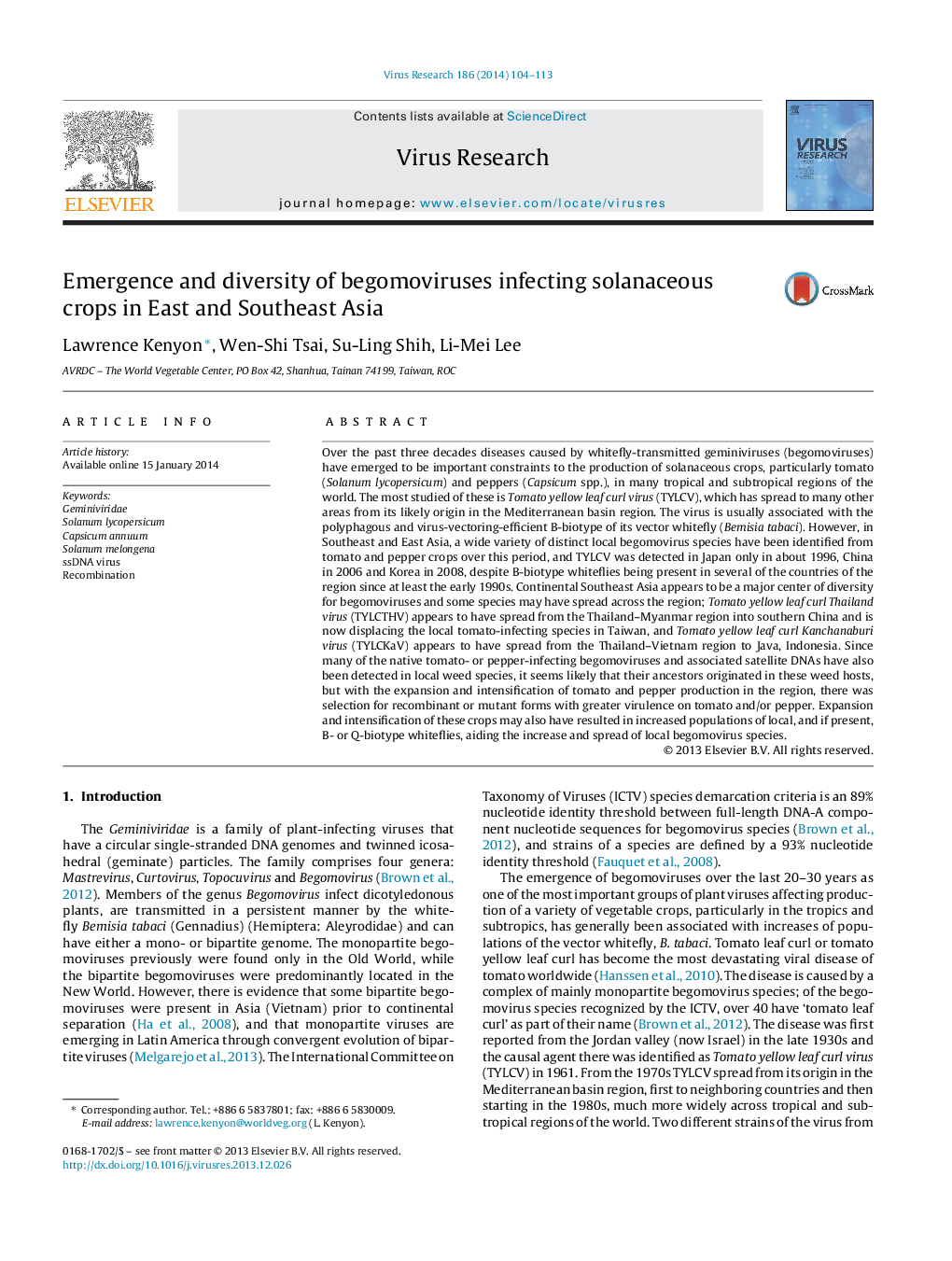| Article ID | Journal | Published Year | Pages | File Type |
|---|---|---|---|---|
| 6142435 | Virus Research | 2014 | 10 Pages |
â¢We catalog and review the begomoviruses infecting solanaceous crops in East and Southeast Asia.â¢We provide phylogenetic analysis to show the diversity of DNA-A components from this region.â¢We speculate as to what are the drivers on the evolution and emergence of these viruses in the region.
Over the past three decades diseases caused by whitefly-transmitted geminiviruses (begomoviruses) have emerged to be important constraints to the production of solanaceous crops, particularly tomato (Solanum lycopersicum) and peppers (Capsicum spp.), in many tropical and subtropical regions of the world. The most studied of these is Tomato yellow leaf curl virus (TYLCV), which has spread to many other areas from its likely origin in the Mediterranean basin region. The virus is usually associated with the polyphagous and virus-vectoring-efficient B-biotype of its vector whitefly (Bemisia tabaci). However, in Southeast and East Asia, a wide variety of distinct local begomovirus species have been identified from tomato and pepper crops over this period, and TYLCV was detected in Japan only in about 1996, China in 2006 and Korea in 2008, despite B-biotype whiteflies being present in several of the countries of the region since at least the early 1990s. Continental Southeast Asia appears to be a major center of diversity for begomoviruses and some species may have spread across the region; Tomato yellow leaf curl Thailand virus (TYLCTHV) appears to have spread from the Thailand-Myanmar region into southern China and is now displacing the local tomato-infecting species in Taiwan, and Tomato yellow leaf curl Kanchanaburi virus (TYLCKaV) appears to have spread from the Thailand-Vietnam region to Java, Indonesia. Since many of the native tomato- or pepper-infecting begomoviruses and associated satellite DNAs have also been detected in local weed species, it seems likely that their ancestors originated in these weed hosts, but with the expansion and intensification of tomato and pepper production in the region, there was selection for recombinant or mutant forms with greater virulence on tomato and/or pepper. Expansion and intensification of these crops may also have resulted in increased populations of local, and if present, B- or Q-biotype whiteflies, aiding the increase and spread of local begomovirus species.
